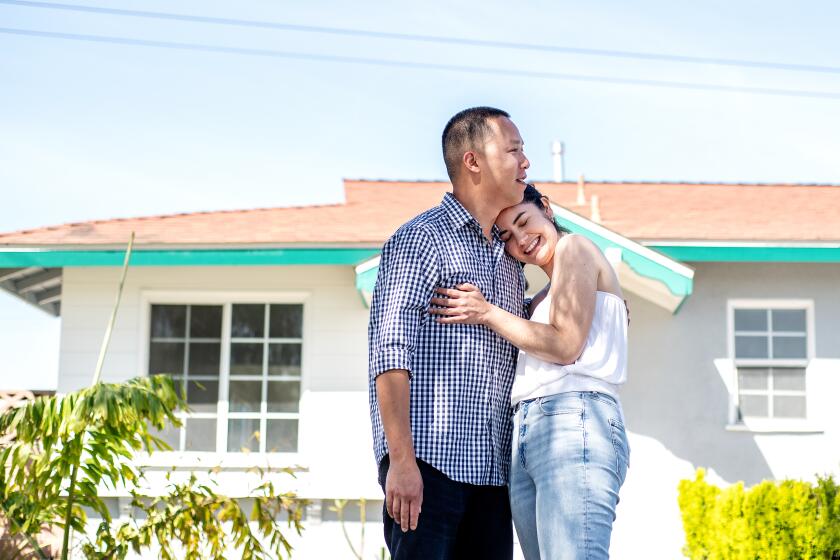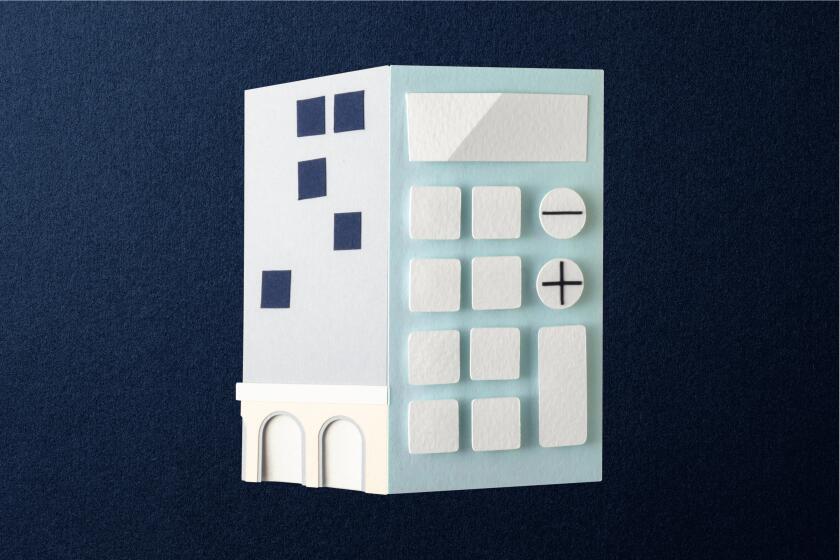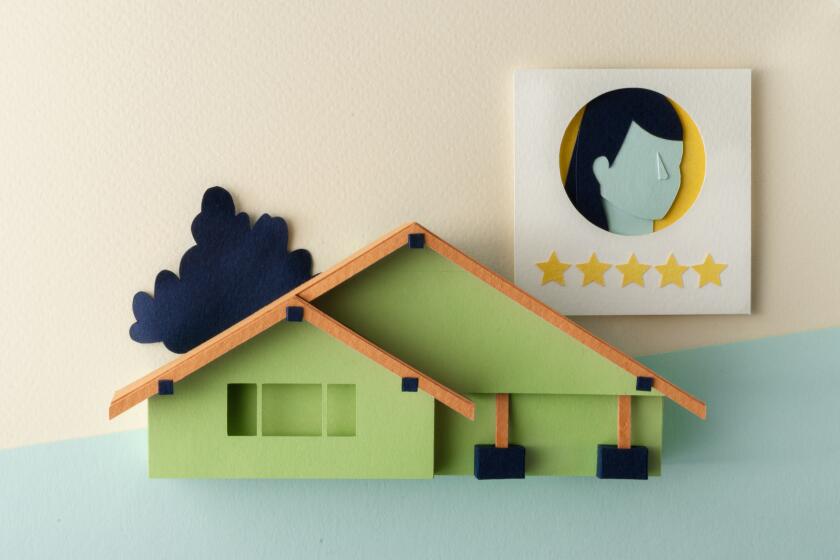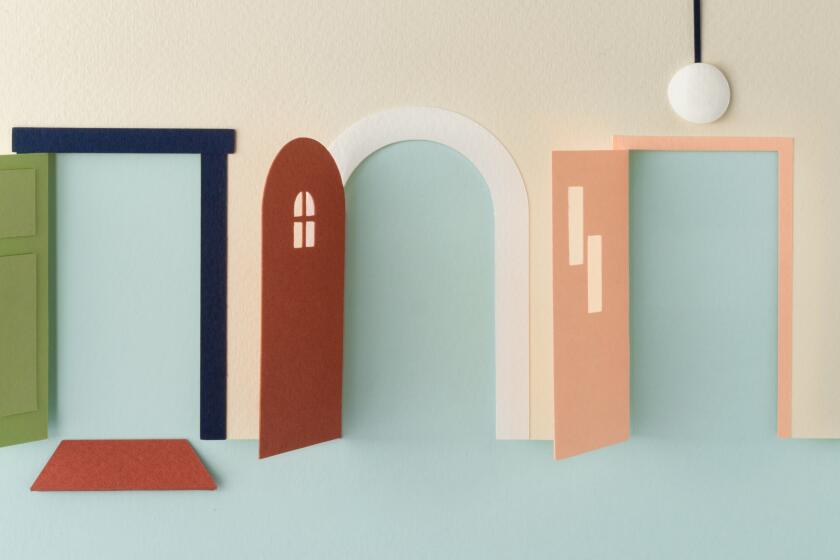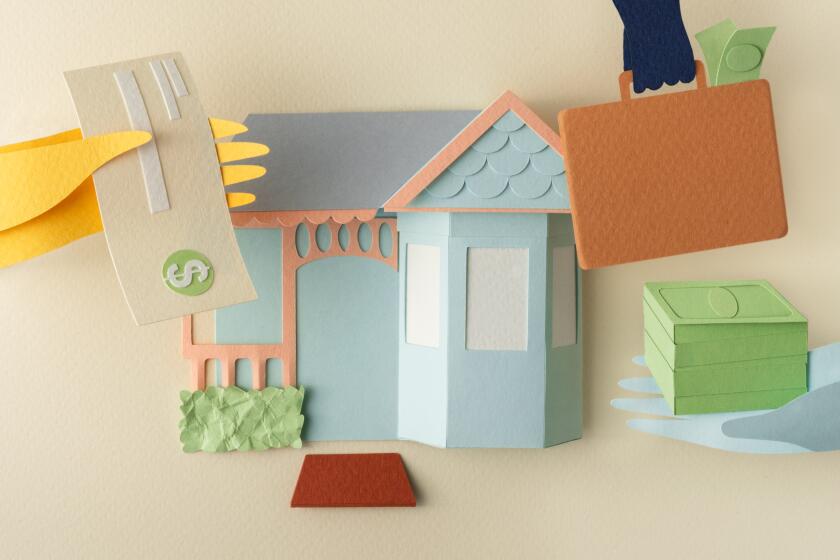Buying a house? Here’s an open secret: You don’t need to put 20% down
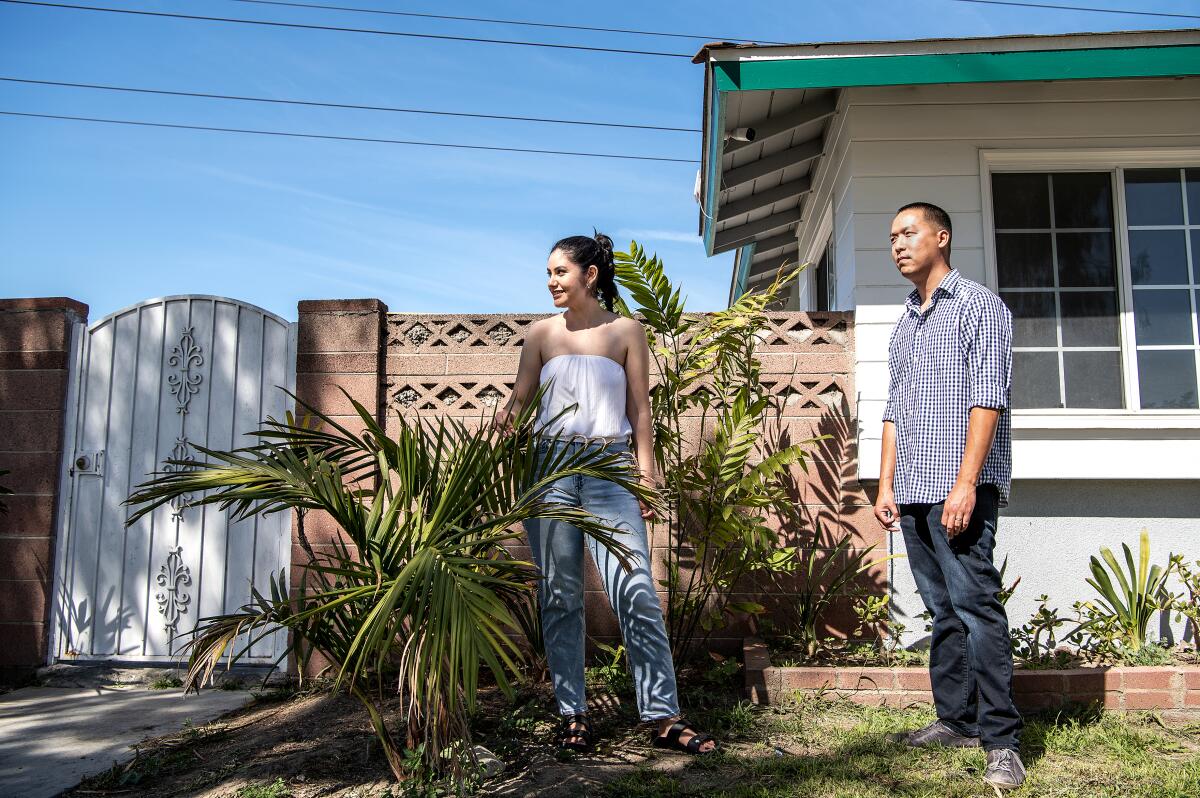
- Share via
Let’s bring you in on an open secret that may transform how you’re thinking about your house hunt: You don’t need a 20% down payment to buy a home.
Most people in America don’t buy their homes with that much money down. The median down payment in a National Assn. of Realtors survey of buyers who purchased from July 2020 to June 2021 was 13%. For people ages 23 to 31, the median was 8%.
Douglas Lazo, 32, who bought a home in September with his partner, said they thought 20% down was the only way until they met with a loan officer.
“We thought, ‘Wow ... that’s a whole chunk of change,’” he said. Then the officer helped surface a 10%-down loan option that worked. “It’s about really knowing the numbers.”
Most lenders will offer loans with as little as 3% down. The smaller down payment usually comes with added costs and some drawbacks. Lenders want assurance that with less skin in the game you aren’t going to walk away, so you’ll typically have a higher interest rate and have to pay for mortgage insurance.
What does it really take to buy a house in Southern California? A Long Beach couple share their story, from strategic job moves to Realtor regrets.
Some people dip into their retirement savings accounts for down payment funds. While some experts warn against touching those accounts, others say it’s OK in a pinch, if you understand the trade-offs and risk of sapping your retirement potential.
Early withdrawals from 401(k)s come with heavy penalties and taxes. You have the option of taking out a 401(k) loan of up to $50,000, without penalties, but you would pay that back with interest.
For IRAs, first-time home buyers can withdraw up to $10,000 for a down payment. That’s taxed but there is no early withdrawal penalty.
Now, let’s review the common loan types and what they offer in terms of low down payment options. Then, we’ll introduce you to down payment assistance programs.
What type of loan is best for a lower down payment?
For most people, your choice for low down payment loans will be conforming loans with as little as 3% down, or FHA loans with as little as 3.5% down. Which one you should choose depends on your personal situation. FHA loans are meant for people with lower credit scores.
According to a December 2021 analysis from the Urban Institute, a nonprofit research organization:
- If you have a FICO score below 700 and put 3.5% down, your initial monthly payments will be lower with an FHA loan.
- If your FICO is 700 or above and you put 3.5% down, the conforming loan will be cheaper each month.
A calculator to help you nail down what you can afford to buy.
More down payment help
Some people who don’t have a ton of money saved turn to family and loved ones for help with the down payment on their first home. But for those of us who don’t have generational wealth to lean on, there are government aid programs.
Friendly tip from first-time buyer Ian Rosenberg: “Do tons of research for any programs out there. They make it more within your reach than you realize.”
CalHFA: One of the main down payment assistance programs comes from this California government agency, which helped Rosenberg and his husband secure their Sherman Oaks condo with assistance on both the down payment and closing costs.
CalHFA offers loans (not free money) to first-time home buyers that must be paid back with interest at the end of the primary loan, either through a sale, refinance or final payoff at the end of the term.
To apply for the MyHome Assistance Program, you have to go through an approved lender, which you can find on the agency’s website. To qualify, your household income has to be no more than 150% of the median income for your area, which you can also check on the CalHFA site.
- With a conventional mortgage, you can borrow 3% of your purchase price, or appraised value, for your down payment and closing costs.
- With an FHA loan, you can borrow 3.5% of your purchase price for your down payment and closing costs.
In April, the agency plans to launch another assistance program called the Forgivable Equity Builder Loan. It will offer up to 10% of a home’s purchase price, or appraised value, to households making 80% or less of their area’s median income.
It also comes with a pretty big upside: If the borrower stays in the home for five years, the loan is forgiven in full — the borrower will have paid nothing.
Other programs: According to the California Assn. of Realtors, there are more than 400 down payment assistance programs available throughout the state.
Some are grants that don’t need to be paid back. Some are available for certain occupations or ZIP Codes. Others have an income limit.
That’s a lot to sift through.
Uncommon ways to buy a home
“People just don’t know these programs are available,” said Sara Sutachan, a senior vice president at the California Assn. of Realtors.
To rectify that, the association set up a searchable database that allows you to look up what is available according to certain criteria, such as income and job.
To get the most accurate view of what’s available, Sutachan recommends when you use the tool to fill in all the options, including those under the “special circumstances” tab.
One program that’s new is a grant from the association that gives up to $10,000 in closing costs to members of underserved communities and is available in Los Angeles County, the Inland Empire and some parts of the San Francisco Bay Area (Sutachan said the group wants to expand the areas the grant will cover).
That includes people of color, who have experienced redlining and continue to face bias in real estate that keeps ownership rates down. Others eligible are people with disabilities and people living in impoverished areas.
To receive the grant, your household income must also be no more than 120% of the median income for your area. You can apply through the following nonprofit groups, partners of the association: Neighborhood Housing Services of Los Angeles County, Neighborhood Partnership Housing Services in the Inland Empire, and Richmond Neighborhood Housing Services in the Bay Area.
Get yourself a good agent: If you plan to use assistance programs, find a real estate agent who is familiar with them, said Denise Matthis, president of the California Assn. of Real Estate Brokers, the state arm of a national agent group dedicated to expanding Black homeownership.
Matthis said some listing agents think, inaccurately, that it’ll take months to close a deal if a borrower uses such programs. An agent familiar with the process can not only walk you through it but explain it to the listing agent so your offer has a higher chance of acceptance.
“If they are not familiar ... you are not going to be a homeowner,” Matthis said.
Five homebuyers tell us how they chose which neighborhood to commit to in Greater Los Angeles — no small feat.
Housing counselors: Housing counselors approved by the Department of Housing and Urban Development are another resource to guide you on what program might be most suitable for you. You can find a housing counselor at HUD’s site.
For Roxana Lopez, a local housing counselor opened her path to her American dream.
Lopez, a 35-year-old grocery store manager, said she always wanted to be a homeowner, something her parents who immigrated from Mexico couldn’t manage. But she knew little about how to go about it until, at the suggestion of a friend who worked at a nonprofit, she visited New Economics for Women, a nonprofit economic development organization in L.A.
For example, she didn’t know how her credit score affected her ability to get a mortgage. A housing counselor at the nonprofit checked her credit score — at the time, it was 586, which would have locked her out of the best financing.
With the counselor’s guidance, Lopez got back on track with her student loans, paid off an old medical bill and had an erroneous medical bill removed from her report. Her score rose to 720, and the counselor also helped her get approved for a roughly $9,000 grant.
Last year, Lopez bought a five-bedroom house in Palmdale. It’s a major improvement, she said, from the one-bedroom Koreatown apartment she shared with her husband and their five children.
“It was very epic when they called me and said, ‘Hey, you won the bid,’” Lopez said. “I can’t express the joy that I felt.”
Southern California home buyers talk about how they made it through — or around — the flurry of ever-higher bids.
The tradeoff: private mortgage insurance
If you put less than 20% down on a conforming loan, the lender will typically require you to buy something called private mortgage insurance, which protects the lender in case you default.
PMI rates can range from less than 0.2% to more than 2% of the principal amount, depending on your credit score and how much you put down, among other factors.
How much you have to pay in PMI will help determine how much the lender is willing to let you borrow.
You typically pay PMI as a monthly cost that’s added to your overall mortgage payment. For example, if you took out a $600,000 mortgage and your PMI costs 0.58%, that’s an additional $290 each month.
Your PMI premiums will go away automatically on the date the unpaid balance of your loan was scheduled to hit 78% of the home’s original value, and no later than halfway through the loan period. But if you pay down the principal faster than required, you can ask the lender to waive PMI as soon as your balance falls to 80% of the home’s original value.
Another way to remove PMI is to refinance. If home prices have soared since you purchased your home, your principal balance may already be 80% or less than your home’s theoretical value, even if it’s not yet there based on the value when you bought.
Some lenders allow you to put down less than 20% and not pay PMI. They will charge you a higher interest rate to do this.
Ask the lender to run the numbers and see not just how your monthly mortgage payment will be different in each scenario but also how much you’d pay back in interest over the 30-year life of the loan. Then consider how long you’re likely to keep the house and the chances you’ll refinance.
With FHA loans, you also must pay a form of private mortgage insurance when putting down less than 20%. These loans require an upfront insurance premium, along with a monthly premium.
Although this differed in the past, people taking out FHA loans today must pay that monthly premium for the life of the loan, unlike conventional-loan borrowers, who will eventually see their PMI canceled.
Step-by-Step Guide
More to Read
Inside the business of entertainment
The Wide Shot brings you news, analysis and insights on everything from streaming wars to production — and what it all means for the future.
You may occasionally receive promotional content from the Los Angeles Times.

